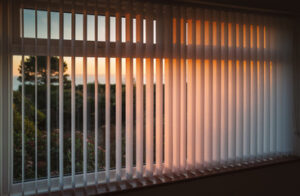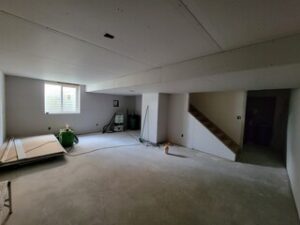Blinds are a favored window treatment for their ability to control light and ensure privacy. They are available in a wide range of materials and styles.

Blindness is defined as a person’s inability to distinguish the largest letter on the Snellen chart, even with prescribed eyewear or medicine. Legally blind people are those whose visual acuity is 20/200 or worse. Visit https://www.customblindsandshadesky.com/ to learn more.
Blinds provide the ability to control how much natural light enters a room. They can be positioned to tilt open or closed, which allows you to block out sunlight or let it filter in. They can also be lowered or raised to create the desired amount of privacy. This flexibility makes them an ideal window covering option for bedrooms and living rooms, where the ability to control light is often a priority.
Blind slats can be customized with a variety of upgrades, decorative fabric tapes, and custom colors to enhance the overall look of your space. They can also be paired with valences and cornices to create an elegant, decorative style. Additionally, you can choose from a range of route holes or routeless blinds. Route holes are typically threaded through the slats, which help secure them for raising and lowering and tilting. However, routeless blinds have a cord ladder that runs along the outside of the slats. They do not offer as much security as the traditional version, and are not recommended for households with children or pets.
Depending on your preferences, blinds can be designed to match your décor and complement other window treatments such as draperies and throw pillows. They can also be paired with motorisation to make it even easier for you to control the brightness of your home at different times of day.
A slatted blind is probably the most versatile window treatment available. Its slats are usually made of wood, plastic, or aluminum and can be rotated to open or close your windows for a view of the outdoors or to control light. They can be lowered to block out the sun, or tilted to let in only the amount of natural light you want.
Blinds and shades offer similar functionality, but blinds are more customizable with a range of slat sizes and direction options. They can be combined with a wide range of upgrades to suit your needs, and both can be motorised for added convenience and ease of use with Somfy. Contact us today to find out how you can add smart home automation to your curtains and blinds.
Blocking Heat
Blinds do more than just block out light, they also prevent heat from escaping through windows. This reduces your energy costs as you won’t have to run your air conditioner constantly. They are especially helpful in hot climates as they can help keep rooms cool without compromising the amount of natural light that streams into them.
If you want to reduce your energy bills even more, choose insulated blinds that have an R-value of up to 4.5. These have cells that trap air to provide insulation and keep your home warm in winter and cooler in summer.
They also protect interior furnishings and flooring from sun damage, extending their lifespan and saving you money on replacement or repair costs. The level of protection depends on the type of fabric used and how thick it is.
Whether you are choosing blinds for their functionality or style, they make a great choice for any home décor. They are available in a wide range of colors and styles that match almost any design aesthetic. You can choose from a variety of materials, including wood, composite and faux wood, as well as aluminum, and you can customize them by adding features like motorization or upgrades.
When it comes to shades, they offer a more classic look. They come in a variety of colors and fabrics that can be customized to suit your style, and they can be layered with other window treatments for additional insulation. The most popular shade is the cellular shade, which has a higher R-value and provides an excellent level of insulation.
Blinds have long been a staple in homes, and they still hold up well against changing trends. Blinds are made from rigid, durable materials and can better withstand wear and tear than some other types of window coverings. They are easy to clean and can be tilted to control the amount of light that streams in.
For a more traditional option, consider wood or faux wood blinds. They can be customized with a number of different slat sizes, upgrades and decorative tapes to create the perfect look for your space. They can be used with or without a top rail and are easily raised or lowered using a bottom bar, rod or cord.
Easy to Clean
Blinds have a lot to offer in terms of style and functionality. They are available in a wide range of materials and styles, and they can be customized to suit your taste and personality. But one thing that is perhaps most appealing about blinds is their easy maintenance. They are relatively simple to clean, and they don’t collect as much dust as other window treatments such as curtains or shades.
The easiest way to keep your blinds dust-free is to simply dust them regularly with a feather duster or vacuum cleaner with a soft brush attachment. Alternatively, you can wipe down the slats of your blinds with a damp cloth. When you do need to deep clean your blinds, we recommend that you take them down and lay them flat on a surface so that you can reach all the corners and crevices.
While there are many types of window blinds, they all require a little maintenance to stay fresh and clean. Vertical blinds tend to collect less dust than traditional horizontal slats, but you should still dust them often with a feather duster or vacuum them with a vacuum cleaner brush attachment. You can also wipe down vinyl vertical blinds with a cloth soaked in water and mild soap.
Cellular blinds are another low-maintenance option that is great for those looking for a stylish and functional window covering. Typically made from hardy and anti-static fabrics, these energy-efficient window blinds repel dust so that they don’t accumulate as quickly as other fabric window shades. To maintain the life of your cellular blinds, you should vacuum them every few months or so and wipe them down with a dry cloth when needed.
Roller blinds are another low-maintenance window treatment that can be wiped down with a cloth soaked in water and gentle soap. They are popular for use in living rooms and home offices due to their sleek appearance and easy maintenance. In fact, their low-maintenance is the main reason they have become a popular choice for rental properties and RVs. They are typically made from a single piece of fabric that rolls up and down over a tube or roller mechanism, and they are operated using a cord or chain. They also come in a wide range of colors and patterns, so you can find the perfect fit for your space.
Stylish
Blinds are a great window treatment option to consider if you’re looking to create a minimalist aesthetic. Blinds with long slats that extend the length of your window or door glass can help to open up space and make it feel larger, especially in smaller rooms. They also offer a sleek, contemporary style that works in any room design from modern living ideas to conservatory decor.
Alternatively, if you prefer soft window treatments, shades like roman and roller blinds are a great choice. They are available in a huge range of colors, fabrics and textures to suit any interior theme. They are perfect for creating a soft look that can still allow natural light in, and they can be paired with blackout linings to block out the sun for ultimate privacy and warmth.
Venetian blinds are a popular window treatment for people who love to embrace color. Their louvres can be tilted to let light in and keep prying eyes out, or they can be fully opened for an unobstructed view. Venetian blinds are also available in a wide range of wood tones and finishes, making them a stylish option for both modern and traditional home decor styles.
Shutters are another classic window dressing that combines functionality with style, ideal for bathrooms, kitchens and other practical spaces where curtains may be inappropriate. They are crafted using high-quality hardwood, giving them a luxurious finish and can be painted in any color you choose to match your home design scheme. They can also be finished with a polyurethane coating to protect them from moisture, meaning they are the perfect window covering idea for any space in your home that is prone to dampness or condensation.
Both blinds and curtains can be automated to further simplify your life around the home, allowing you to control them from anywhere with a smartphone app. This means you can effortlessly switch your blinds on and off, or change the ambiance of your home in just one click!
